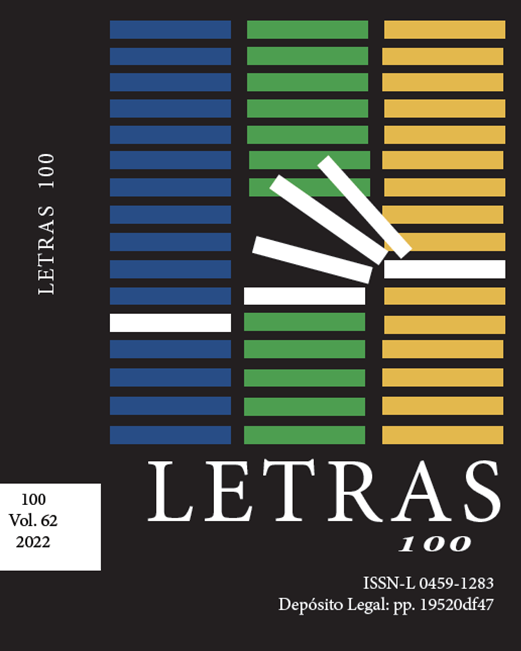The Tamunangue, collective memory
DOI:
https://doi.org/10.56219/letras.v62i100.1419Keywords:
Tamunangu, history, secular religious, traditional festivities, symbolicAbstract
The purpose of this paper is to present some results obtained from the study of El Tamunangue, as a dramatic representation that narrates in a past and present time, a story that combines religiosity with secularity. This celebration is typical of the state of Lara, in Venezuela and revolves around the devotion to San Antonio. Together with Yolanda Salas, we analyzed the results obtained by Turner (1967 and 1969) when studying aspects of the Ndembu ritual in Zambia. Following his research, we organized the study of traditional festivals in three levels. During my fieldwork research, carried out between 1980 and 1990, I recorded a series of data related to El Tamunangue, which I processed and studied according to these three levels. Thus, I was able to depict what is said about this festivity; its execution as a devotion and as a religious tribute, in order to understand the symbolism of the festivity.
Downloads
References
Aretz, I. (1970) El Tamunangue. Caracas. Italgráfica
Eliade, M. (1973) Lo sagrado y lo profano. Ediciones Guadarrama. S. A.
González, N. (1990) El Tamunangue como teatro de imitación y simbólico de la realidad. Trabajo de grado de maestría no publicado. Universidad Pedagógica Experimental Libertador. Instituto Pedagógico de Caracas. Caracas.
Ossorio, F. (1978) El juego del palo canario. Según los Verga. Santa Cruz de Tenerife. Talleres litográficos de Ideas-ELLA
Paredes, O. (2006) Tamunangue o sones de negros. Folleto publicado en Cabudare, Lara. Revisado en 2016
Salas Y. y González, N. (1987) El teatro popular en las fiestas folklóricas: la representación teatral en las Locainas de Pueblo Llano y en el Poco a poco del Tamunangue de Sanare. Artesanía y Folklore de Venezuela. Año X, N° 58, pp. 24 – 30
Turner, V. (1967) The forest of symbols. Cornell University Press. Ithaca. Londres
________ (1969) The ritual process. Structure and Anti-Structure. Adline Publishing Co., Nueva York
Published
How to Cite
Issue
Section
License
Copyright (c) 2022 Letras

This work is licensed under a Creative Commons Attribution-NonCommercial-ShareAlike 4.0 International License.
Letras magazine retains the patrimonial rights (copyright) of the published works, which favors and allows their reuse under the license (CC BY - NC - SA 4.0), for which they can be copied, used, disseminated, transmitted and expose publicly, as long as the authorship and original source of its publication (magazine, publisher, URL and DOI of the work) is cited, they are not used for commercial or onerous purposes and the existence and specifications of this use license are mentioned.















